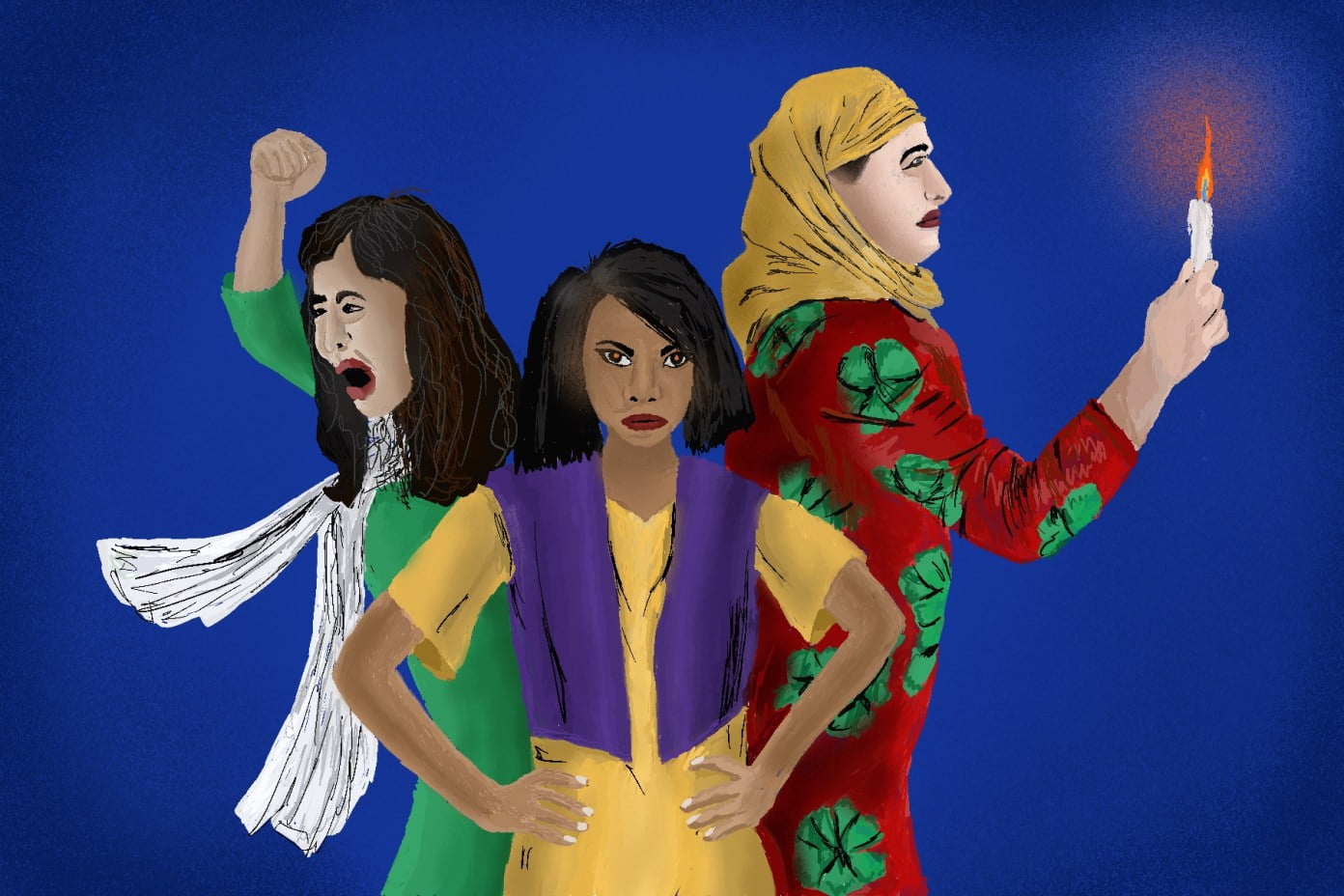Trigger warning: sexual violence
On March 28, 2021, social media buzzed with a video of a minor girl and a young boy being paraded through the field in the Alirajpur district of Madhya Pradesh. The 21-year-old boy has been accused of raping the 16-year-old girl. The couple was beaten and tied with rope. The people marching around were chanting slogans of ‘Bharat Mata ki Jai‘, including the girl’s family members. It was the proud spectators who filmed the parade and uploaded it, gleefully. The video immediately rocked the intellectual pockets and strict actions were sought. MP Police has arrested six people since then; five villagers and the rape accused. The news came as an absurd shock to the civilised society and was soon forgotten. This article tries to deconstruct the social psychology that led to such an incident.
A walk of shame?
Nathaniel Hawthorne wrote, The Scarlet Letter in 1850. Situated in the Puritan settlement of seventeenth-century Boston, the novel explores the psychology of a society that could never accept a woman’s choice. Hester Prynne, the protagonist is paraded through the town wearing the scarlet letter ‘A’, with boys beating drums around her declaring her arrival at public places. The parade aimed to instil shame in the woman who chose to express her sexuality but also to set a precedent for the women in the society, of the consequences they will have to face if they refuse to obey their husbands and express their sexuality.
The novel might not be a perfect description for the act in MP, but the symbolism of the ‘Walk of Shame’ bears an uncanny similarity. The patriarch’s role is swapped by the father in this scenario, and just like Hawthorne’s character hid in the crowd looking at his wife being subjected to public shame the father here became an active part of the parade.
A woman is almost always blamed for sexual violence committed against her. The parade was the patriarch’s way to teach her shame for her actions, even if she was the one wronged. The parade and its unashamed telecast were also a lesson meant for the audience. It was for the women to understand the consequences they might have to face if they exploit the family’s honour embedded in their vaginas.
Also read: A Man Is Not The Regulatory Of A Woman’s Honour
Bharat mata ki jai!
The roaring chants of Bharat Mata ki Jai throughout the parade bear the burden of the symbolism of the dream of an ideal ‘Aryan’ Hindu Mother (Woman). The history of the construction of Bharat Mata reveals the patriarchal necessity of these chants. The concept appeared for the first time in a satirical piece named Unabisma Purana, published anonymously in 1866. Bhudeb Mukhopadhyay constructed her image as the embodiment of everything ‘Aryan’. Since then, she has been written about, enacted, sung, and painted by many intellectuals, every time bearing a different meaning of her existence. From Bankim’s Anandmath to Tagore’s song to Abanindranath’s painting of a saffron-clad woman to Amrita Shergil’s imagination of her as a tribal woman, she has been re-incarnated at the pleasure of her people.
Bharat Mata is not merely a representation of land bound by political boundaries but the personification of a Hindu Goddess. She is constructed at the cry of her people in the image that they want to portray of their nation. The masculine saffron-clad nationalist India we are living in requires a re-interpretation of Bharat Mata as a damsel who needs to be protected and punished.
The aggressive national sentiment has constructed a patriarchy that swears to control the sexuality of its women, at any cost. Though the men are not heard blaming the woman, the sheer act of the walk tied with her alleged rapist through the public space conveys their disgust at the exploitation of woman’s chastity. She is beaten and punished for a crime that she is the victim of. Bharat Mata during the nationalist struggle was a war cry for her sons to protect her. The chants of twenty-first-century India blame her for being raped. Her ‘guardians’ who fail to protect her become executors of punishment.
Also read: How Is Rape Culture Related To The Notion Of Women As Carriers Of Family Honour
The heinous act occurred in Alirajpur city of Madhya Pradesh, 400 km from the capital Bhopal. The MP Chief Minister in January this year passed a law assuring tracking of working women to curb the increasing cases of violence against them. The minor girl from the tribal community does not fulfil CM’s criteria. This act must force us to stop and think of how laws are biased towards women of a certain class and caste. The Minister conveniently ignored the safety of women most vulnerable to sexual violence. The minor girl’s grief must be a lesson for the state to revisit its laws and understand the futility of it.
Alirajpur is the poorest district of India, with about 76.5% of its population living in poverty. The poverty of the city must reflect directly on the vulnerability of its women. The women in the tribal pockets of this city are the worst-hit sections of society. The uproar after the event was silenced after six arrests. No ministry or women’s organisation came forward to demand protection for vulnerable women living invisibly in small cities of India. The promises made from the stage serve only a section that has the agency to interact with the world. The subaltern of India still suffers in silence and ignorance.
Role of Media and its aftermath
The insensitive depiction of rape cases by the media has normalized the act. This parade made news only after it was shared ferociously on social media. Through the pursuit of the research for this article, many news websites were carefully read and waited on. Even after seven days of this act, there was not one follow-up story. The latest news reported the number of villagers booked and all of them published the same statement of the Sub-Divisional Officer of Police (SDOP) Dilip Singh Bilwal. None of the news agencies even tried to accommodate the victim’s view. The media that was meant to give voice to the people is reduced as a newsletter for the ones in power.
The video was sold as an absurd scandal and then discarded. It is an important event in the study of intersectional feminism. The victim comes from the most repressed section of society and we as intellectuals with a voice have failed to allow her an agency. Amidst the chaos of chants and the absurdity of her being tied to her rapist, every voice heard was of a patriarch. The parade became a walk of shame. Patriarchy successfully conveyed its message and the woman was silenced in her shame and poverty.
Also read: Shame, Shame! From Work To Our Bodies, Shaming Is Universal!
Featured Image Credit: Aasawari Kulkarni/Feminism In India
About the author(s)
Dr. Guni Vats is an Assistant Professor at the Department of English, Manav Rachna International Institute of Research and Studies. A PhD in Gender Studies, she is a renowned researcher, writer, and scholar.






